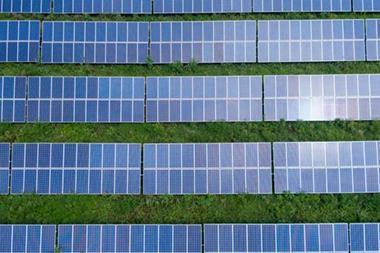Scaled-up actions can support ”deep emissions reductions”, with carbon capture and storage an option
In 2010-2019 average annual global greenhouse gas emissions were at their highest levels in human history, but the rate of growth has slowed.
Without immediate and deep emissions reductions across all sectors, limiting global warming to 1.5°C is beyond reach, said scientists in the latest Intergovernmental Panel on Climate Change (IPCC) report.
However, there is increasing evidence of climate action. Since 2010, there have been sustained decreases of up to 85% in the costs of solar and wind energy, and batteries.
An increasing range of policies have enhanced energy efficiency, reduced rates of deforestation and accelerated deployment of renewable energy.
“We are at a crossroads. The decisions we make now can secure a liveable future. We have the tools and know-how required to limit warming,” said IPCC chair Hoesung Lee.
“I am encouraged by climate action being taken in many countries… If these are scaled up and applied more widely and equitably, they can support deep emissions reductions and stimulate innovation.”
The Summary for Policymakers of the IPCC Working Group III report, Climate Change 2022: Mitigation of climate change was approved on April 4 2022, by 195 member governments of the IPCC.
Essential energy transition
Limiting global warming will require major transitions in the energy sector. This will involve a substantial reduction in fossil fuel use, widespread electrification, improved energy efficiency, and use of alternative fuels (such as hydrogen).
“Having the right policies, infrastructure and technology in place to enable changes to our lifestyles and behaviour can result in a 40-70% reduction in greenhouse gas emissions by 2050. This offers significant untapped potential,” said IPCC Working Group III co-chair Priyadarshi Shukla.
Cities and other urban areas also offer significant opportunities for emissions reductions. There are options for established, rapidly growing and new cities.
“We see examples of zero energy or zero-carbon buildings in almost all climates,” said IPCC Working Group III co-chair Jim Skea. “Action in this decade is critical to capture the mitigation potential of buildings.”
Reducing emissions in construction will involve using materials more efficiently, reusing and recycling products and minimising waste. This sector accounts for about a quarter of global emissions.
Achieving net zero will be challenging and will require new production processes, low and zero emissions electricity, hydrogen, and, where necessary, carbon capture and storage.
Agriculture, forestry, and other land use can provide large-scale emissions reductions and also remove and store carbon dioxide at scale.
However, land cannot compensate for delayed emissions reductions in other sectors.
Response options can benefit biodiversity, help us adapt to climate change, and secure livelihoods, food and water, and wood supplies.
Achieving the Sustainable Development Goals
Accelerated and equitable climate action in mitigating and adapting to climate change impacts is critical to sustainable development.
Some response options can absorb and store carbon and, at the same time, help communities limit the impacts associated with climate change. For example, in cities, networks of parks and open spaces, wetlands and urban agriculture can reduce flood risk and reduce heat-island effects.
Mitigation in industry can reduce environmental impacts and increase employment and business opportunities. Electrification with renewables and shifts in public transport can enhance health, employment, and equity.
“Climate change is the result of more than a century of unsustainable energy and land use, lifestyles and patterns of consumption and production,” said Skea. “This report shows how taking action now can move us towards a fairer, more sustainable world.”




















No comments yet